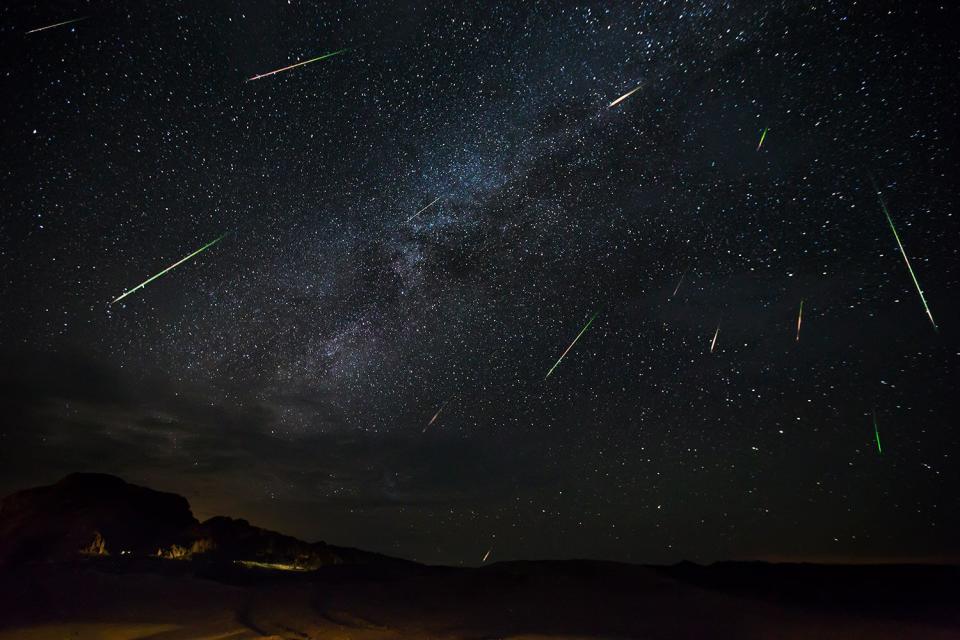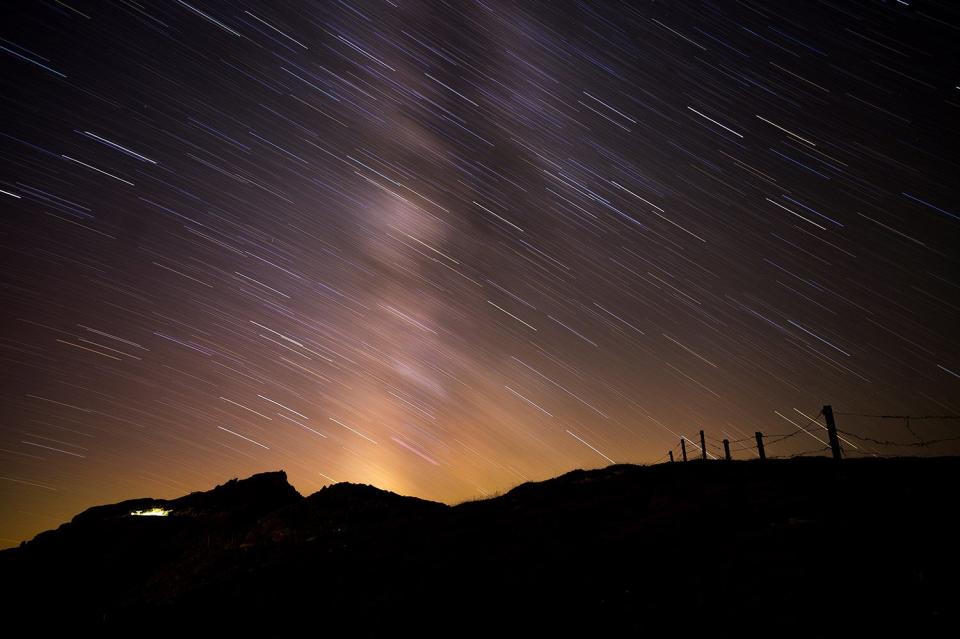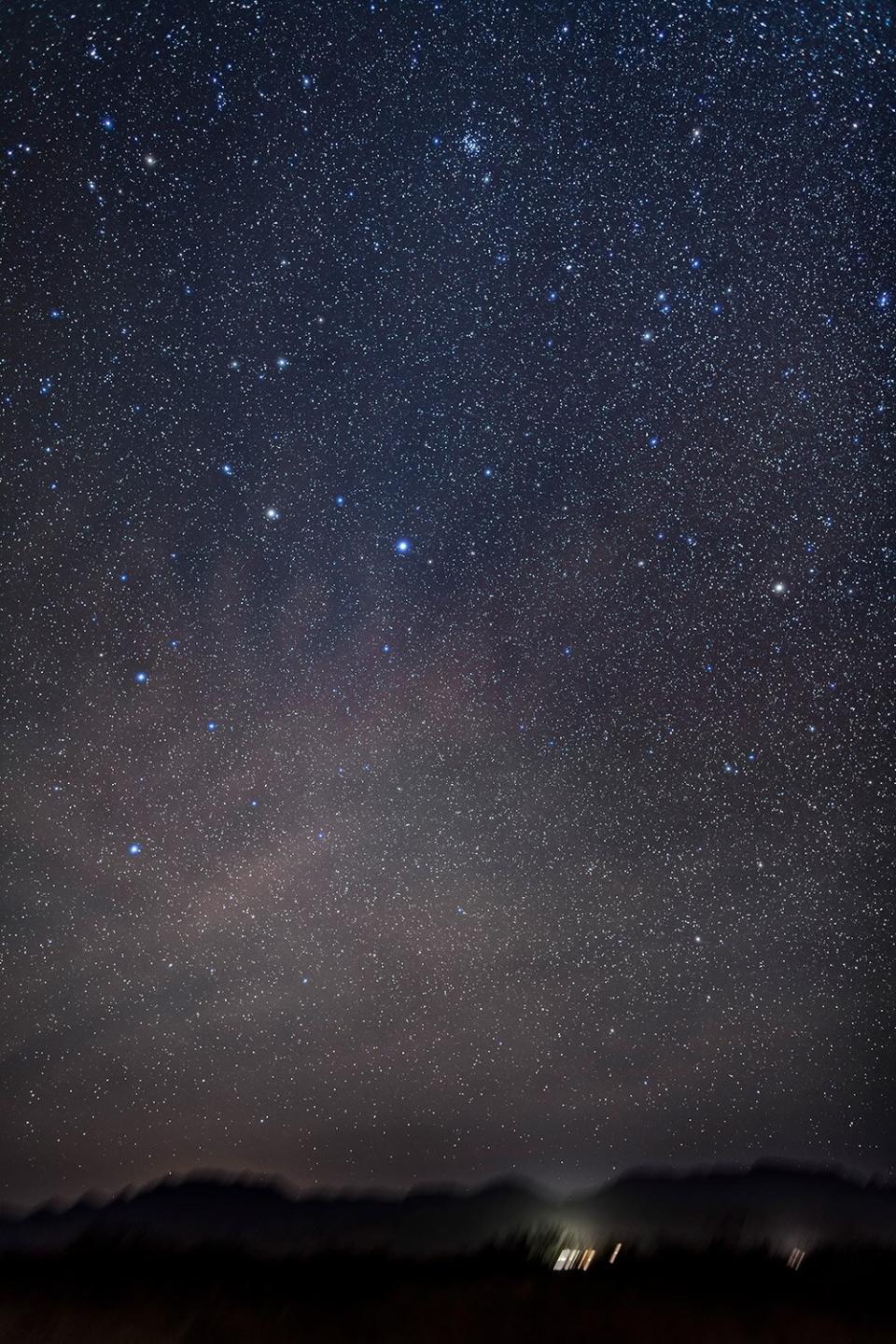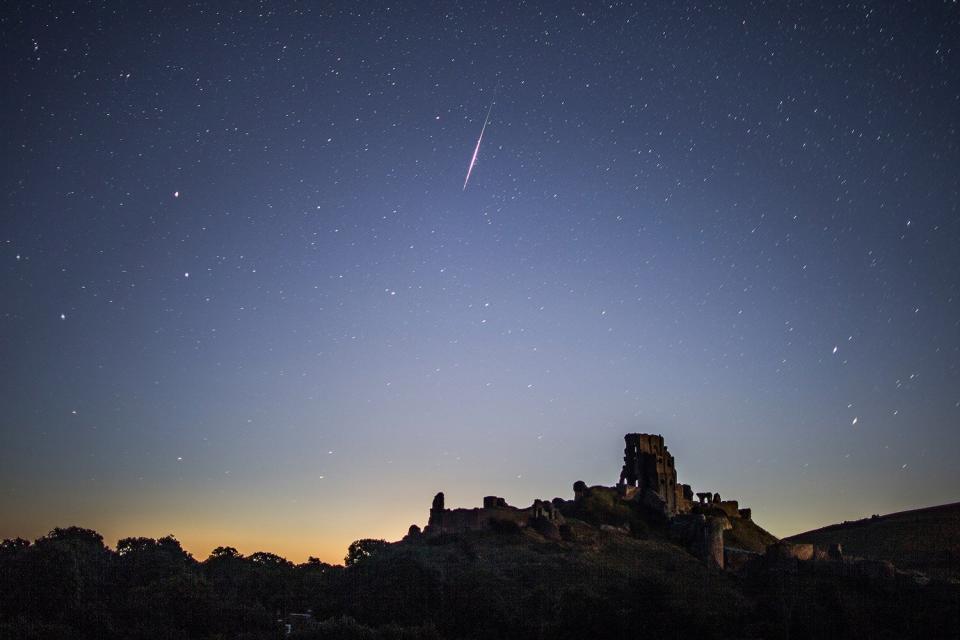Everything to Know About 2022's Tau Herculid Meteor Shower, Including When It Peaks and How to Watch

getty
While April brought rain showers, May is bringing meteor showers!
Nearing the month's end, a spectacular starry spectacle known as the tau Herculid meteor shower is expected to peak during the night of May 30 into May 31 early morning.
"This is going to be an all or nothing event," according to Bill Cooke, who leads NASA's Meteoroid Environment Office at NASA's Marshall Space Flight Center. Witnessing the phenomenon is dependent on the comet from which it derives.
Most meteor showers stem from comets as a result of their debris. It's when Earth passes through the field of fragmented particles that stargazers get to experience the fantastic light show display that occurs in the night sky.
As for the tau Herculid meteor shower, it is described by NASA as a "possible newcomer" this year due to the unpredictability of its corresponding comet 73P/Schwassmann-Wachmann, or "SW3."

getty
SW3 was discovered by German observers Arnold Schwassmann and Arno Arthur Wachmann in 1930 but wasn't visible again until the late 1970s due to its extreme faintness. A fascinating observation was made in 1995 when it appeared 600 times brighter, becoming viewable to skywatchers with a naked eye.
Astronomers had noticed that its intense radiance was a result of its shatter, "littering its own orbital trail with debris," per NASA. By the time it passed Earth again in 2006, it was fragmented into approximately 70 pieces — and has further splintered since.
Here's everything to know about the starry spectacle, should the SW3 comet's debris clash with Earth's atmosphere this year.
RELATED: Everything to Know About the Eta Aquarid Meteor Shower, Including When It Peaks and How to Watch
When can you watch the tau Herculid meteor shower?

getty
Though it's still uncertain whether or not the tau Herculids will take place this year, but if the comet goes as planned, the meteor shower is expected to peak late at night on May 30 into May 31 early morning.
Fortunately for stargazers in North America, the moon will be in its new moon phase during the time the showers are predicted to take place. This means a 0% illumination will be in effect, resulting in a very dark sky, making it easier to spot the starry display.
According to the Old Farmer's Almanac, maximum activity is set to occur at 1:00 a.m. ET on May 31, Tuesday morning.
RELATED: Watch Neowise Comet Zip Past Earth in 'Beautiful' Video from the International Space Station
Where can you spot the tau Herculid meteor shower in the sky?

getty
While meteor showers appear to radiate from their corresponding constellation, they most often can be viewed all over the night sky. The point from which the tau Herculids stream will be above Baja, California near the bright star Arcturus, per the Old Farmer's Almanac.
The starry pattern associated with the tau Herculids is the Hercules constellation, the fifth largest constellation in the sky.
What will the tau Herculid meteor shower look like?

getty
Like NASA's Cooke mentioned, this meteor shower is going to be "an all or nothing event," depending on the velocity of the comet's debris.
"If the debris from SW3 was traveling more than 220 miles per hour when it separated from the comet, we might see a nice meteor shower," Cooke added. "If the debris had slower ejection speeds, then nothing will make it to Earth and there will be no meteors from this comet."
But according to the Old Farmer's Almanac, the conditions could potentially align for a "perfect storm," in which the display can produce upwards of 1,000 meteors per hour!
RELATED: Total Lunar Eclipse 2022: See All of the Super Flower Blood Moon Photos from Around the World
When will the next meteor shower be after the tau Herculids?

getty
Following the tau Herculids, the next meteor shower set to take place is the Southern Delta Aquariids. While they are expected to peak the night of July 29 into July 30 early morning, the showers will remain active from July 18 to Aug. 21, according to the American Meteor Society.

 Yahoo Finance
Yahoo Finance 